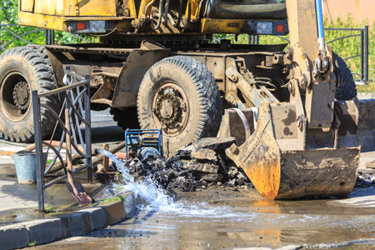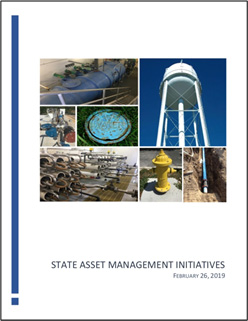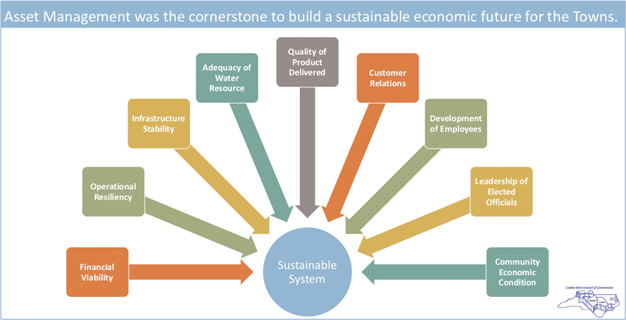Help For Small Water Systems Might Be Closer Than You Thought


Due to limits in personnel or resources, small community water systems often have a tough time funding and implementing needed upgrades. A recent webinar on Leveraging Regional Development Organizations to Support Small Water Systems, hosted by the Environmental Finance Center Network (EFCN), shows how collaboration can make a difference by integrating water-system concerns into a broader approach to overall community concerns. A link on the same webpage as the webinar video also gives readers access to the slides used in the webinar, providing an opportunity for small-water-system managers to zero in quickly on segments of specific concern.
Diverse Perspectives On Development Opportunities
The main speakers in the hour-long webinar address topics ranging from strategic guidelines to down-to-earth experiences on specific projects. Key presenters include:
- National Association Of Development Organization (NADO). Brett Schwartz, the associate director of the NADO Research Foundation describes the variety of organizations that constitute regional development organizations (RDOs) — e.g., regional councils, economic development districts, planning and development councils, etc. He also outlines the experience and value they can provide for guidance on funding, grant writing, data management, and broader economic concerns.
- Southeast Nebraska Development District (SENDD). Liz Cody, a community development specialist with SENDD, speaks about how the town of Morse Bluff, Nebraska (pop. 128) worked through their regional development district to leverage more than $1-million in funding from several U.S. Department of Agriculture programs, a Community Development Block Grant, and local financing. The project involved replacing their water-storage tank; installing a new well, piping, and water mains; upgrading a pumphouse; and installing automatic meter reading.
- Lumber River Council of Governments (LRCOG). Jean Crews-Klein, a regional planning director with the council, outlined a process used to map assets of local water- and wastewater-system infrastructure and to focus on critical assets and risk exposure. The LRCOG covers a five-county area of North Carolina where loss of manufacturing jobs has heavily impacted many local economies and small municipal-owned water and wastewater systems. A key aspect of the presentation focuses on the value of asset management for cost-effective decision-making that will protect future viability. The resource used was the legacy U.S. EPA Check-Up Program for Small Systems (CUPSS) Asset Management Tool. While the EPA no longer supports that specific tool, it does offer Asset Management Resources for States and Small Drinking Water Systems that identify additional asset management tools and support resources (Figure 1).
Equally interesting to the specific projects outlined in the webinar is the interrelated network of organizations and resources introduced there and on the EFCN website. These range from the Rural Community Assistance Corporation to numerous regional environmental-finance centers and other RDOs.

Image Source: U.S. EPA Website
Figure 1. This EPA document outlines initiatives related to physical, funding, and regulatory aspects of asset management on a state-by-state basis.
About The Webinar
While the webinar does cover specific examples of infrastructure investment and sustainability, it also addresses the value of strength in numbers — showing how utility operations can benefit from taking a broader view of their needs and potential resources. Some key takeaways include:
- Emphasizing Resilience. Pressures on small water systems come from a variety of circumstances that affect other aspects of their community as well. These might be caused by financial impacts from a decline or loss of specific commercial or employment assets, impacts from a global pandemic, climate change, weather, or other natural disasters. Addressing such problems from a community-wide or regional focus can add perspective to interrelated issues and the costs and economic opportunities of working as part of a greater effort.
- Finding Allies In A Common Struggle. Working with organizations that share common interests in regional economic impacts or financial investments adds perspective and improves leverage for water-system interests. That can range from getting help with grant writing and funding sources to sharing GIS mapping, data-collection tools, and regional data resources.
- Improving Planning and Priority Setting. Understaffed small water systems can leverage the expertise and personnel resources of other organizations that regularly work on larger strategic planning and project funding activities.
- Setting A Clearer Vision For The Future. Working with organizations that are more strategically focused on sustainability across a broad range of economic and governmental concerns (Figure 2) can reduce the stress on small water systems that are forced to concentrate today’s efforts and limited resources on today’s problems.

Graphic provided courtesy of Jean Crews-Kline, Lumber River Council of Governments
Figure 2. Because of the impact on a broader context of regional economic concerns, protecting small-water-system sustainability is in the vested interest of local governments and businesses. That creates motivation for RDOs to play a role in supporting small-utility asset management and funding activities.
About EFCN
According to its website, “The Environmental Finance Center Network (EFCN) is a university-based organization creating innovative solutions to the difficult how-to-pay issues of environmental protection and improvement. The EFCN works with the public and private sectors to promote sustainable environmental solutions while bolstering efforts to manage costs.” An additional collaborative effort among members of EFCN, NADO, and the Government Finance Officers Association — the Smart Management For Small Systems Project — specializes in providing guidance and assistance to water systems serving 10,000 or fewer residents.
Beyond the webinar on working with RDOs, the EFCN website includes direct video links to a dozen additional webinars conducted over the past year. It also provides opportunities to register for other webinar and training sessions ranging from financial rates to utility management to physical operations.
To read more about funding issues for utilities of any size, visit Water Online’s Utility Management Funding Solutions Center.”
